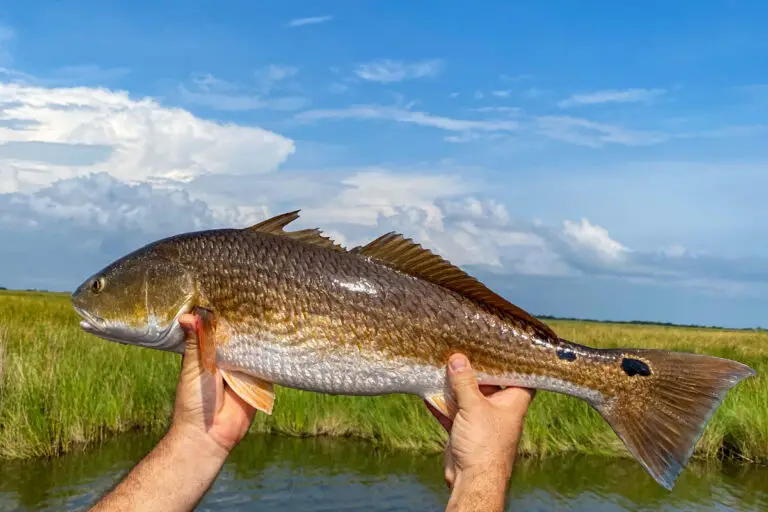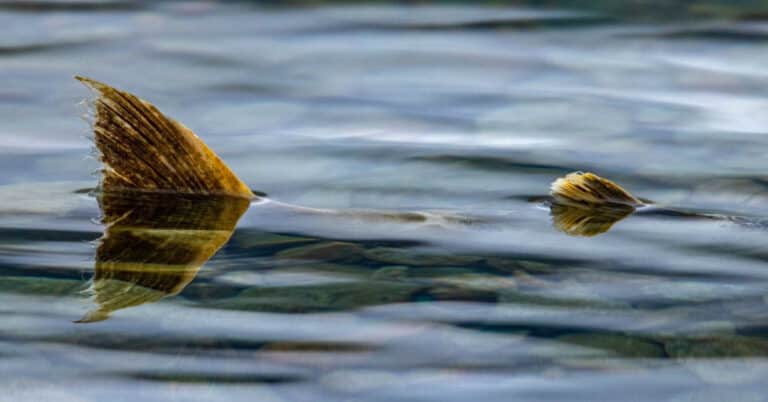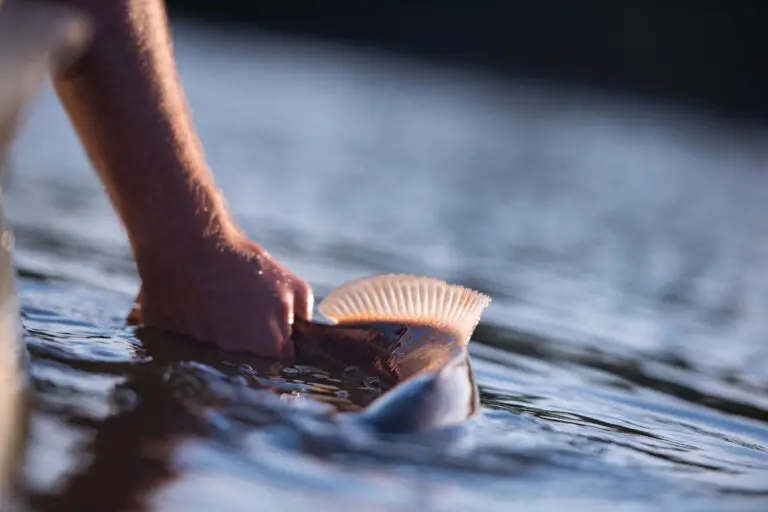Top 7 Best Live Bait For Redfish: An Ultimate Guide
Are you tired of coming back from a fishing trip empty-handed? Look no further than the top 7 best live bait for redfish. In this ultimate guide, we’ll cover everything you need to know about using live bait to hook those elusive redfish.
From shrimp to pilchards, each bait has its unique characteristics and seasonality. We’ll dive into the specifics of each bait, including hook behavior and best bait size, when and where to use them, and rigging tips. Plus, we’ll answer some frequently asked questions to help you become a pro at catching redfish with live bait.
Don’t miss out on your chance to catch the big one – read on for our ultimate guide to using live bait for redfish!
Bait #1: Live Shrimp
Shrimply Irresistible: Using Shrimp as Live Bait for Redfish
Shrimp are among the most successful weapons when it comes to targeting redfish. Whether you’re near shallow grass flats, fishing deeper water spots, or simply along coastal areas and mangrove shorelines, using fresh shrimp will be a surefire way to target big redfish.
Several shrimp varieties are effective for redfish fishing. Here are a few popular options:
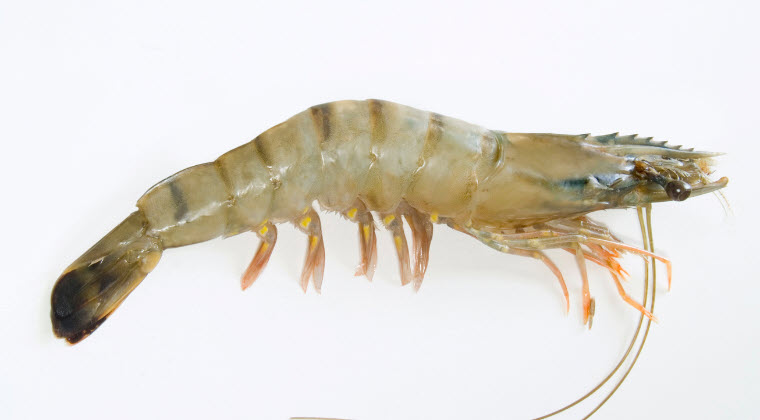
- Brown Shrimp: This is one of the most common types of shrimp used for redfish fishing in the Gulf Coast region. Brown shrimp have a distinct brown or gray coloration and are usually 5 to 6 inches in length. They are typically found in shallow, brackish waters and can be caught using cast nets or traps.
- White Shrimp: Another popular shrimp variety for redfish fishing is white shrimp, which have a pale pink or tan coloration and can grow up to 3 inches in length. White shrimp are typically found in deeper waters and can be caught using trawls or seines.
- Pink Shrimp: While less commonly used than brown or white shrimp, pink shrimp can also be effective for catching redfish. These small, pink-colored crustaceans are typically found in shallower waters and can be caught using cast nets or traps.
Hook Behavior and Best Bait Size for Shrimp
When using live shrimp as bait for redfish, it’s important to understand how they behave on the hook.
Here are a few things to keep in mind:
Shrimp will continue to move and wiggle on the hook, which can attract nearby fish and entice them to strike.
Shrimp are delicate creatures, so it’s important to handle them carefully and avoid damaging them when rigging your line. Damaged or dead shrimp is less likely to attract bites from redfish.
Depending on the size of your bait and the water depth you’re fishing in, you may need to adjust your rigging to ensure that the shrimp stays at the right depth to catch redfish.
As for the best size of live shrimp for redfish fishing, it depends on the specific conditions you’re fishing in. In general, larger shrimp (around 3-4 inches) can be more effective for attracting big redfish, while smaller shrimp (around 2-3 inches) may be better suited for targeting smaller fish or fishing in shallower waters.
Tips for Rigging Shrimp
- Jighead: This involves threading the shrimp onto the hook and then attaching a weighted jighead to the line. The weight of the jighead helps to keep the bait near the bottom, where redfish often feed.
- Carolina Rig: This involves using an egg sinker and swivel to create a sliding weight system, with the shrimp attached to a leader behind it. This allows the bait to move more naturally with the current, which can be especially effective in areas with the strong tidal flow.
- Free-Lining: For a more natural presentation, some Gulf fishermen prefer to free-line shrimp without any additional weight or rigging. This involves simply hooking the shrimp through its tail or under its horn and allowing it to drift naturally near structures like oyster beds or jetties with the current.
- Popping Cork: This involves attaching a brightly colored cork above the bait and using short, sharp jerks of the rod tip to create noise and attract attention from nearby fish.
Bait Seasonality for Shrimp
Here’s a breakdown of when you can typically expect to find live shrimp in abundance, as well as the best times to use them for fishing:
- Spring: In many areas along the Gulf Coast, shrimp become more abundant in the spring months (March – May), as water temperatures begin to warm up and baitfish populations increase. This is also a great time to use live shrimp for redfish and other species that are active and feed heavily after the winter months.
- Summer: Shrimp are generally available throughout the summer months (June – August), although they may become less abundant during periods of extreme heat or drought. During this time, it’s important to keep your bait cool and fresh by storing it in a cooler with ice or using a live well on your boat.
- Fall: As water temperatures begin to cool down in the fall (September – November), shrimp can become more difficult to find in some areas. However, they can still be effective for catching redfish and other species that are preparing for winter migration.
- Winter: Shrimp may be harder to come by during the winter months (December – February) due to cooler water temperatures and slower baitfish activity.
Bait #2: Mullet
The Silver Bullet: Using Mullet as Live Bait for Redfish
Fishing bull reds and slot reds with live bait is an exhilarating experience, and that’s why I always opt for using finger mullet as my go-to choice. While they’re often found in grassy marshlands, they offer a unique opportunity to accommodate almost any fishing situation.
When using mullet as a live bait you can either rig it with a circle hook and a weight attached to the end of your line, which allows it to run along the bottom – perfect for bull reds – or rig it up so that it’ll stay near the surface, being easier digestible and attractive to slot redfish. Mullet is an ideal choice when targeting big bull red drum!

Hook Behavior and Best Bait Size for Mullet
Redfish love mullet, which is why they make such great bait. Redfish will rarely turn them down because their natural behavior on the hook is of jumping and spinning making them impossible to resist.
To get the best size mullet for redfish baits, you should be looking for finger mullet – around 3-4 inches long. Once hooked, redfish will take mullet and dart off in search of cover, giving anglers a real fight that’s nothing short of exhilarating.
When and Where to Use Mullet
Fishing for redfish using mullet as bait is an excellent choice for many reasons. The oily and salty flesh of mullet makes them a great option when targeting tailing redfish on shallow flats.
Mullets are also lightweight and durable, allowing you to cast further even in heavier current or wind conditions. The key is to make sure your rigs are set correctly, as correctly placed mullet can be irresistible to redfish!
Try throwing your rigs around structures like rocks, pilings, and grass beds for the best results. And if the water is choppy, you may want to rig double mullet or even use a float.
Tips for Rigging Mullet
- Hook mullet through the nose or lips close to the eye, with a 4/0 circle hook for better hook-ups.
- If you wish to rig multiple lines at once, it’s best to tie a 3-foot leader from the mainline barrel swivel and attach two consecutive hooks 6 inches apart.
- If you’re looking to use lighter tackle, a sliding float rig is a great way to go for tail-picking mullet. Make sure your float is light enough not to drag down the mullet but heavy enough that you can detect strikes easily.
Bait Seasonality for Mullet
Spring:
- In late February and March, mullet start to make their way back to the inshore areas, making it an ideal time to fish for redfish using mullet bait.
- This period also sees a rise in water temperatures, which further enhances the likelihood of catching redfish.
- During April and June, the Gulf of Mexico experiences a surge in mullet, making it an ideal time to fish for redfish using mullet bait.
Summer:
- Late June is another excellent time to fish for redfish with mullet, especially in the Florida panhandle coasts.
- The large quantity of mullet available during this time can also be used in the western parts of Alabama and Mississippi throughout the summer.
- While the amount of mullet available may decrease later in the season, it can still be a great option for early summer fishing before the fish move further offshore.
Fall:
- Early fall is a great season to catch red drum using mullet bait as schools of migrating mullets come back through.
- The migrating schools of mullet provide excellent opportunities for catching redfish.
Winter:
- Winter is generally a challenging time to fish for redfish with mullet bait, as there is a decrease in the amount of mullet available.
- However, it is still possible to catch redfish using mullets during this season, especially in warmer locations.
- Some anglers even prefer using mullet during this time because it can attract larger fish that are looking for a hearty meal.
Bait #3: Crab
Pinching the Competition: Using Crab as Live Bait for Redfish
Crab is a great live bait choice if you’re targeting redfish.
Common types of crabs used as bait include:
- Fiddler crabs. Fishermen love to target redfish and sheepshead with the help of a fiddler crab – these little crabs are abundant in many coastal regions, plus they’re super easy to catch. Each one has just one large claw that makes them ideal for baiting any line!
- Ghost crabs. To get the best catch for surf fishing, anglers should consider using ghost crabs. Using a scoop net or digging near the water’s edge will help you snag these little critters as bait – and they attract species like redfish, pompano, and whiting!
- Blue crabs. The blue crab is a staple of the coastal habitat and its bright, striking claws make it an unmistakable sight. A popular bait for many species such as redfish, black drum, or sheepshead – these crabs can be spotted in estuaries and bays among tidal creeks.
Ghost crabs have been an effective strategy for reeling in large redfish, and luckily they can be easily found near surf or beach spots. My experiences show that this is the most promising technique!
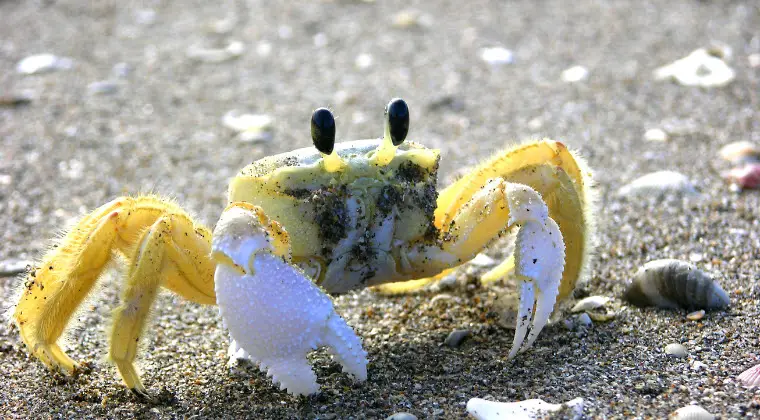
Fiddler Crab 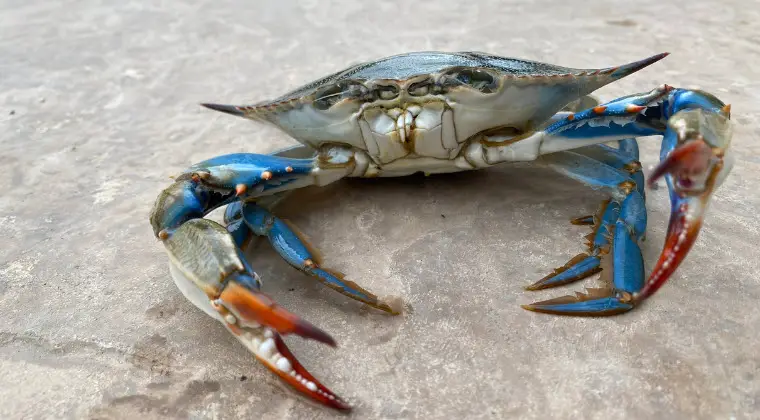
Blue Crab 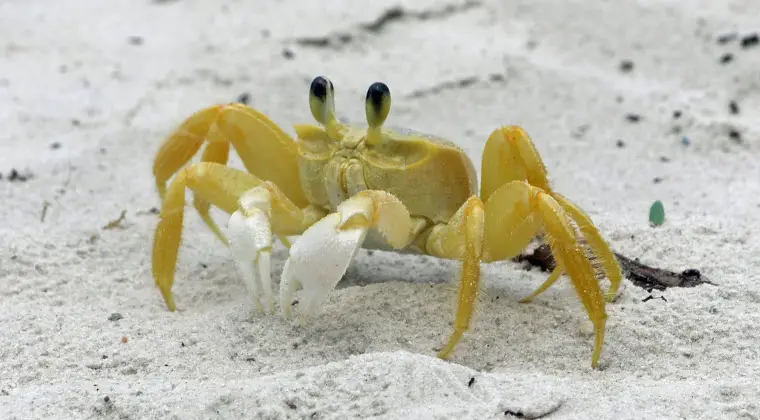
Ghost Crab
Hook Behavior and Best Bait Size for Crab
Using a slow sinker, attract these critters with bait that’s between 2-3 inches long and you’re set for some exciting action. They may try their best at first to escape your hook but eventually, they’ll get tired of struggling—it’s time then to start hauling them up!
When and Where to Use Crab
From docks to piers, the best way to use crabs is near natural structures, especially when the tide is low and they come out from underneath them in search of prey.
Crabs are an excellent bait choice all year round – so you can always look forward it having a great catch!
Tips for Rigging Crab Bait
Rigging a crab for bait is an easy and effective way to catch fish. Just thread the hook through its outer shell or leg, then fling it out into the water.
The movement of the crab will attract attention from nearby predators looking for their next meal!
Bait Seasonality for Crab
Redfish usually feed on crabs as bait throughout the year, though their availability can vary depending on location and season. In general, crabs are more available to use as redfish live bait during the warmer months of the year, from late spring through early fall.
- Spring: During the warmer months, crab makes for excellent bait for redfish. Spawning season, typically spring and summer, allow fishermen to access plenty of large adult crabs.
- Summer: Crabs can be especially potent and plentiful during the summer months when molting is at its peak.
- Fall: When transitioning into fall, juvenile crabs are more plentiful and better suited as a light bait option.
- Winter: During the winter season, crab is an especially effective and plentiful bait choice. Although larger crabs are preferred by Redfish during this time of year, small ones are often favored since they are more easily accessible in river estuaries that are insulated from the colder temperatures.
Bait #4: Pinfish
The Pint-Sized Powerhouse: Using Pinfish as Live Bait for Redfish
These silvery swimmers with yellow and blue stripes offer an irresistible snack for Redfish. With sharp spines on the dorsal fin, a spot behind the gill cover, and their unique swimming pattern that drives big catch wild, these ‘scaled sardines’ top off any tackle box as perfect live bait of up to 4 or 5 inches in size.
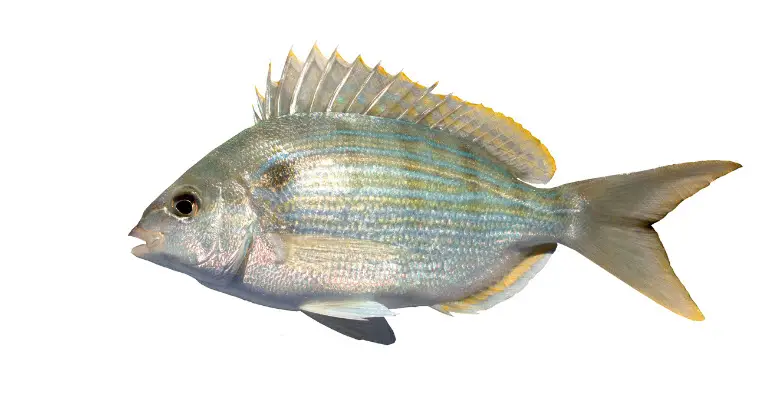
Hook Behavior and Best Bait Size for Pinfish
Pinfish can be a remarkably effective bait when fishing for redfish, as they are known to act erratically while on the hook and wriggle near the bottom of the water.
Their unpredictable behavior is sure to entice a hungry redfish, making them an excellent choice for experienced fishermen who understand how to properly set a hook.
Fishermen can find the perfect Pinfish for their needs–from tiny ones that wiggle and dance to tempt Redfish in shallow water, around dock pilings and mud flats, to larger choices ideal when trolling offshore.
When looking for redfish, specifically 4-inch specimens are a great choice if you’re fishing shallower waters; however, bigger sizes will help attract them from deeper depths.
When and Where to Use Pinfish
Pinfish is a preferred choice for redfish bait in inshore fishing and shallow grassy flats, where they tend to hide under mangrove trees and rocks. During high tide on flats, rigging a few pinfish can attract redfish.
These baitfish are abundant near shorelines, piers, and shallow areas during spring and summer. A cast net can be used to quickly gather bait near the bank.
Tips for Rigging Pinfish
Pinfish draws in redfish with their soft body and small size, making them the perfect bait. They are best hooked rigging it through both lips.
For maximum catch potential, rig a Carolina weight of 1/2 to 3/4 ounces on 24 inches of leader wire. You can also try free-lining or stick with a light jig head for an effective presentation!
Bait Seasonality for Pinfish
- Fall: Pinfish tend to be attracted to deeper waters and estuaries, making them easy for anglers to find near shore or close to bridges.
- Winter: brings a reduction in availability as their schools migrate elsewhere due to cooler water.
- Spring: Spawns an abundance of new fish and an increased presence in shallow waters such as flats and reefs.
- Summer: More active, with larger numbers showing up along oyster bars where they can be reliably caught.
Bait #5: Menhaden
Menhaden Madness: Using Menhaden as Live Bait for Redfish
Menhaden, otherwise known as shad, bunker, or pogies, is a species of ocean fish that is known to be an effective bait for redfish due to its wide range in size and availability.
The oily composition makes them attractive to redfish, who just can’t resist their delicious flavor. With sizes ranging from two inches up to fourteen inches,
Menhaden provide a great variety in weight and size when used as bait. Furthermore, each region often has different varieties of Menhaden based on local conditions; making it easy to choose the right type of bait for your specific situation!
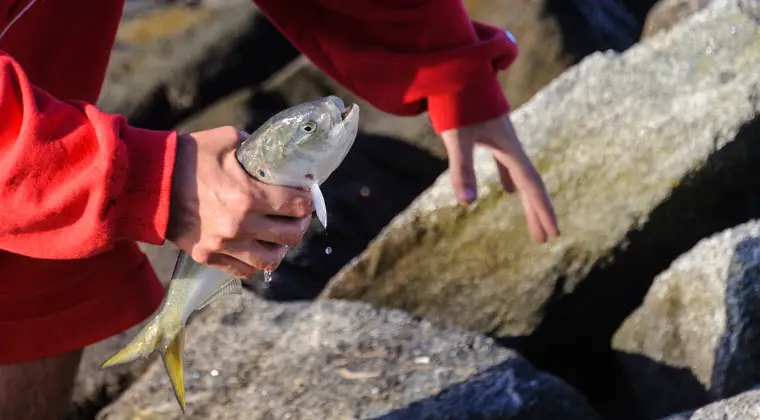
Hook Behavior and Best Bait Size for Menhaden
Menhaden are a great choice of bait when fishing for redfish. The fact that they swim backward when attached to a hook makes them enticing to hungry fish like redfish.
To maximize your chances of success, use smaller-sized menhaden of 3-5 inches and deploy the hook close to the head for a more natural swim.
Touring fishermen have found success by allowing their rigged menhaden to fall slowly towards the ocean’s bottom, where it remains until it strikes an unsuspecting redfish.
Its impressive profile serves as tempting bait with a strong scent and taste, making it hard for nearby game fish to pass up! Additionally, using live menhaden can increase your chances of hookups due to its lifelike swimming motion in the water.
When and Where to Use Menhaden
If you’re looking for reliable bait to catch redfish, look no further than menhaden. When fishing for redfish, the best time and place to find these small fish are near the surface of inlets and estuaries.
Menhaden are mainly found closer to shore or at marsh edges during the warm months. Once properly prepared, these fish serve as excellent bait for redfish, making them one of my favorite go-to baits when I’m on the water.
Tips for Rigging Menhaden
When fishing for redfish with a menhaden bait, the most effective technique is to hook the bait through the top of its nose and then rig it on a Carolina-style leader. This will allow you to keep plenty of distance between your line and the bait while also holding it in place while you fish.
When fishing with menhaden, the best spots to target are weed edges, drop-offs, and grass flats that have sandy bottoms
Bait Seasonality for Menhaden
Menhaden are an exceptional bait for redfish in the warmer months. Although these fish can be found year-round, they are more common during the spring, summer, and early fall due to their high prevalence in shallow inshore waters. During these times, anglers can conveniently find Menhaden schools near entranceways along sandbars or grass flats.
Bait #6: Croakers
Croak Your Way to Redfish Success: Using Croakers as Live Bait
Experienced fishermen are no strangers to the alluring appeal of croakers – these fish, found in shallow bays and beach breaks, produce distinct drumming sounds that make them an irresistible bait for Redfish.
Atlantic Croaker, Kingfish, Weakfish, and Golden Croaker have proven to be successful lures specifically designed with catching this species in mind. And a well-known go-to for catching red drums.
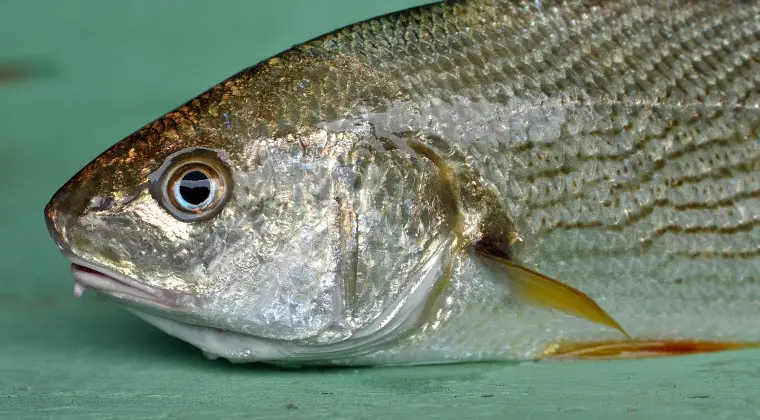
Hook Behavior and Best Bait Size for Croaker
Once submerged in the water, the croaker tends to swim around more than other baits and it can be quite active on the end of the line. This swimming motion draws in potential catches from longer distances, making it an effective bait.
The ideal size for a croaker should be between 4-6” for use as redfish bait.
When and Where to Use Croaker
As a seasoned angler, I suggest following this seasonal guide to locate croakers and maximize your chances of a successful fishing trip.
- Spring: estuaries near salt-water bays and shorelines
- Summer: inshore bays and bayous
- Fall: surf fishing along beaches
- Winter: close to oyster shells scattered throughout tidal marshes
Tips for Rigging Croaker
My go-to spot is typically in the nostril or just behind its eyes. When rigging up the croaker to catch redfish, it is best to use a 2/0 or 3/0 circle hook.
Try using a fish-finder rig or free-lining lightly weighted split shot to keep the bait in its natural horizontal position and at a desirable depth.
Bait #7: Pilchards
Pilchard Power: Using Pilchards as Live Bait for Redfish
Pilchards, also known as sardines, are a popular form of live bait for redfish. These little fish have a high-fat content that makes them irresistible and comes in an array of sizes from fingerling up to 9-inch jumbos; with colors ranging from silvery hues through pinkish greens.
Easily found on both the East and West coasts plus some Gulf areas.
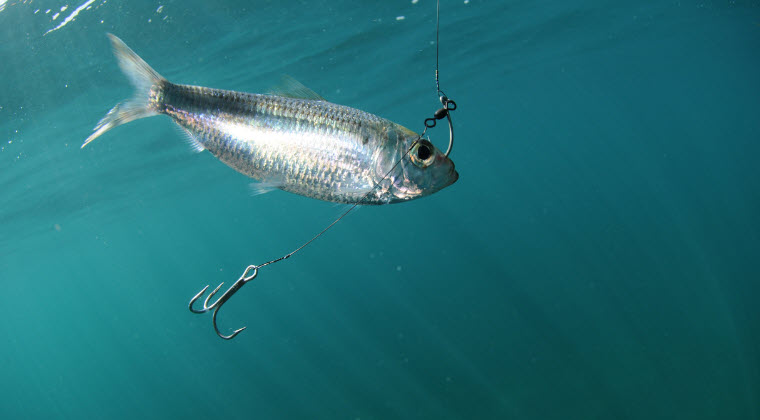
Hook Behavior and Best Bait Size for Pichards
For Pilchards as live bait, the hook behavior underwater can be quite lively, often flipping rapidly and swimming away from the school.
To get the best results when targeting redfish, it’s recommended to stick with smaller-sized pilchards to entice strikes, around 3 to 5 inches. Larger size pilchards are best used off the bottom for larger game fish like groupers or snappers.
When and Where to Use Pilchard
Pilchards are excellent bait for redfish and can be found far and wide through the open ocean. Overwater structures can provide a great refuge for these tasty fish and serve as an excellent spot to target large redfish.
They are usually available year-round, but their availability of them may vary depending on the season and location. Pilchards are typically sold in dozen or half dozen quantities and can be bought live or frozen.
Tips for Rigging Pilchard
When rigging a pilchard for redfish, the best bet is to hook them through the back, near the dorsal fin. This allows the bait to maintain its natural swimming action and appear more enticing for your targeted species. Try hooking them twice with a single hook or just once if you’re using a larger hook.
Pilchards are a great option for redfish bait and can be fished in multiple different ways. One of the most effective techniques is to rig them on a hook with a split shot or pinch on the weight placed 8-12 inches above the hook. A Carolina rig can also work well, allowing you to cast and slowly retrieve your pilchard without needing to constantly re-bait. To keep your pilchard from slipping off, it’s best to use a circle hook so that even if your fish gets away, you won’t lose your bait.
Frequently Asked Questions
Redfish are opportunistic predators and will eat a variety of prey depending on their size and location. However, some of the most common food sources for redfish include shrimp, crabs, mullet, menhaden, and other small baitfish.
With the right preparation, catching redfish using live bait is achievable. To start, select a rig such as fish finder rigs, Carolina rigs or popping cork rigs and adjust its weight to match water depth and current so that it stays in prime position for strikes. Finally cast your hooked bait into popular redfish habitats for an exciting fishing experience!
Redfish can be a thrill to catch! With the right baits and lures, anglers are sure to have success on their fishing trips. Live shrimp, mullet, crabs, pinfish, menhaden or croakers all make great bait when targeting these fish. If you’re feeling adventurous why not try an artificial lure like soft plastics or spoons?
FishBites are a popular artificial bait option for redfish. The FishBites E-Z Baits in shrimp and crab flavors are known to be effective for catching redfish
Conclusion
This guide is essential for anglers of all levels who are looking to improve their success when it comes to catching redfish. Whether you’re a beginner or a seasoned pro, this guide provides helpful tips, tricks, and information on the top 7 best live bait I have found for redfish.
Learn about hooking behavior and best bait size, when and where to use them, plus rigging tips that will give you the upper hand in your next fishing trip.



